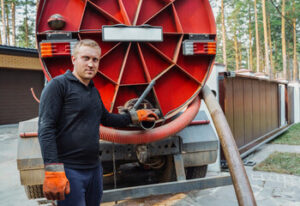Porta Potty Rentals are necessary when hosting large events or working on construction sites. They keep the area clean and organized and help attendees or workers stay healthy and sanitary.
Several different types of porta potties are available for rent, including standard units, flushable options, and ADA-compliant restrooms. Some even include extra features like handwashing stations and hand sanitizer dispensers!

Renting porta potties is an affordable way to provide restroom facilities for short-term events. They are also available for construction sites and other projects that require temporary toilets. They can be purchased for a day or a week, and some rental companies offer monthly rates. However, the cost can vary depending on the type of porta potty and its location. In addition, other fees can add up to the total cost. For example, you will have to pay for delivery and setup, which can be costly. Also, you should find out if cleaning and maintenance are included in the price or not.
The cost of a portable toilet depends on the type and number of units needed. Standard waste basins without plumbing are the cheapest, while deluxe washrooms with flushing toilets and sinks cost more. The length of the rental period and the number of users also affects the price. For example, a wedding party requires more units than a construction site.
If you are renting porta potties for a long-term project, finding a company that offers discounts for longer rentals is a good idea. They will save money on delivery, setup, and removal costs over time. Also, they will have a better understanding of your needs and can help you choose the right unit for your specific project.
A reputable company will be honest with you about the price of the unit, including any additional charges. Some companies will charge a waste handling fee for disposing of the waste in landfills. Others will include a cleaning and maintenance fee in the total rental cost. Some rental companies will clean the porta potties regularly, but some will only do so once a week.
Some companies will also charge extra for services that aren’t necessarily necessary, such as a VIP valet. These services may be required for high-profile events, such as a concert. They can also be useful for high-rise construction projects, such as those in Queens Village and other parts of New York City. Many workers are on their feet all day, and using the bathroom often becomes a necessity.
Size
A portable toilet, or porta potty, is a necessary addition to any outdoor venue that hosts an event. Whether you are hosting a small gathering of friends or a large concert, having enough bathrooms is crucial to keeping everyone happy and safe. Portable toilets come in a variety of sizes, from standard to ADA compliant, so you can find the right one for your event. Choosing the correct size depends on several factors, including how long your event will last and how many people you are expecting to attend.
Standard porta potties are no-frills units that can be rented in large numbers for a relatively inexpensive price. They are suitable for up to 50 people for about ten hours, but you may need more if the event is longer or if there are a lot of guests. You can also upgrade to a flushable model, which is more like an actual restroom and offers more hygiene. ADA-compliant porta potties meet Americans with Disabilities Act (ADA) requirements and offer more floor space for wheelchairs. They are also available in a variety of color options to complement your event’s décor.
You can also rent mobile sinks and shower trailers to provide more amenities for your guests. These units can be used for washing hands, taking medications, and more. They are often a good choice for events that require a high level of sanitation, such as festivals or high-stress movie shoots. They can also be useful for construction sites or seasonal businesses that need to accommodate a large number of workers.
Regardless of the type of portable toilet you choose, it is important to take measurements before you make your rental. This will help you determine where to place the unit and avoid any issues with overcrowding. The best location is on solid ground that’s out of the way from major crowd movement. Also, make sure that the area is well-lit to prevent accidents.
Maintenance
A portable toilet needs regular cleaning to keep it sanitary and functional. Depending on the amount of usage, it may need to be emptied as frequently as once per day or up to three times a week. It is important to work with a reputable porta potty rental company, such as John To Go, that offers cleaning services and sanitization. The service includes emptying the tank, refilling it with blue additive that works as a disinfectant and odor control substance, and changing out paper products such as toilet tissue, hand sanitizer, and soap. The company will also place a cleaning service sticker inside the unit to document that the unit was cleaned and sanitized.
It is important to have enough portable restrooms for your event or party. Having too few will create long lines and make guests unhappy. If you’re hosting a wedding, music festival, or construction project, you might need to rent several units. It’s best to overestimate the number of portable toilet rentals you need rather than underestimating them.
There are a few fees that may be associated with renting porta-potties. These include a waste-handling fee, a cleaning and maintenance fee, and an extra charge for deliveries on weekends and Sundays. The waste-handling fee covers the cost of transporting the portable toilets to and from the landfill, while the cleaning and maintenance fee includes a weekly cleaning and sanitation of the unit. If you need your portable toilets to be cleaned more often, such as if there’s an alcohol-fueled event or large crowds, you can expect to pay a higher cleaning and maintenance fee.
A portable restroom is a necessity for any outdoor gathering or event. It’s a great way to provide your guests with proper onsite sanitation and ensure that everyone has a comfortable experience. If you’re looking for a portable toilet rental for your next event or project, Pacific Sanitation has a variety of options to suit any budget and space requirements. From basic units to premium models with flushing toilets and hand washing stations, we have you covered!
Disposal
Whether you’re hosting a backyard party, staging an event or taking on the New York City Marathon, it is important to have clean portable toilets on hand. This will help keep guests happy and comfortable, even during a long event. Porta potty rentals are available in a variety of sizes and features, so you can find the perfect one for your needs. You can also find used units that may be cheaper.
Most rental companies provide delivery, pick-up, and maintenance services for their customers. The units are delivered on a truck that has a mechanical lift in the back, which allows them to be easily unloaded. After the units are loaded, a company representative will come by to fill them with water and sanitizer. They will also test the toilets to make sure they are working properly. They can also be rented on wheels, making them easy to transport from location to location.
The waste from a porta potty is collected and transported to a sewage treatment facility for disposal. The cost to dispose of the waste can vary depending on where it is collected and how much waste is disposed of. Some companies may also incur climate-related charges to comply with regulations and environmental laws. Be sure to ask about these fees before you sign a contract.
If the units are located on private property, a permit is not required. However, if they are placed on public property, a permit is needed based on the size of the event. Some cities require a permit for events that have more than 200 attendees.
Before deciding where to place the portable toilets, be sure that you have enough room. They will take up a lot of space, so you should consider this before signing a lease or purchasing a unit. You should also look for a storage area that is close to your operating region, as this will save you money in transportation costs.
It’s also a good idea to have extra units on hand, as this will prevent a lot of headaches for you and your guests. If you are planning an event, be sure to have at least four ports-o-potties for every 100 people in attendance. Otherwise, your guests will not have a place to go when nature calls.








